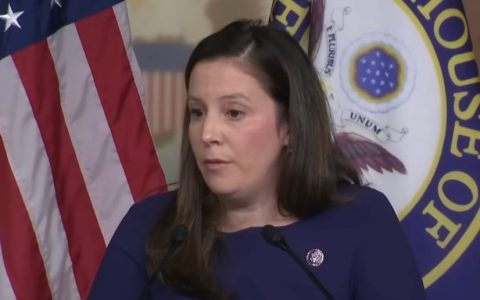
The Donald Trump admin has a problem on its hands. One wrong step will mean disaster.
Because President Trump had to sign an urgent emergency order to prevent the energy grid from having a complete meltdown.
The Trump administration is taking action to keep America’s lights on, issuing yet another emergency order to prevent blackouts in the Mid-Atlantic region. On Thursday, the Department of Energy (DOE) extended an order to keep units at Pennsylvania’s Eddystone Generating Station running, a critical move to stabilize the grid as an energy crisis looms. This follows a May 30 directive that first kept the oil and gas plant operational, defying the scheduled retirement of its units.
“With unprecedented energy demand and resource retirements outpacing new generation additions, the country is facing an energy emergency. Today’s order proves that the Trump Administration is dedicated to confronting this critical issue,” said DOE Secretary Chris Wright Thursday. “This administration considers power outages and soaring energy costs to be unacceptable.” President Trump’s leadership is laser-focused on ensuring reliable, affordable energy for Americans, especially as the nation grapples with surging demand from data centers, electric vehicles, and industrial growth.
The Eddystone Generating Station, located near Philadelphia, operates under PJM Interconnection, the grid operator serving all or parts of 13 states and Washington, D.C. PJM, working with Constellation Energy, will keep the plant’s units running for at least another 90 days to prevent power shortages. This move is critical as PJM faces growing strain from rising electricity demand and the premature retirement of reliable power plants, a situation exacerbated by Democratic policies prioritizing unreliable green energy over proven fossil fuel sources.
For years, Democratic governors like Phil Murphy of New Jersey, Wes Moore of Maryland, Josh Shapiro of Pennsylvania, and Matt Meyer of Delaware have pushed aggressive green energy agendas, including net-zero goals and coal plant phase-outs. These policies have driven up electricity costs and destabilized the grid. Consumers in these states have seen their bills skyrocket, with electricity rates in Delaware, Maryland, New Jersey, and Pennsylvania jumping 23 to 40 percent over the past five years, according to federal data. Yet, these governors have deflected blame onto PJM, with some even suing the grid operator to mask their own policy failures.
“PJM doesn’t write policy. PJM has to work within the policy and political realities that they get from the states in that region,” André Béliveau, senior manager of energy policy at the Commonwealth Foundation, told the Daily Caller News Foundation. PJM’s role is to keep the grid stable, not to set the unrealistic green mandates that have left the region vulnerable to blackouts. The Trump administration’s intervention is a necessary corrective to these shortsighted policies, ensuring that plants like Eddystone remain online to meet demand.
Amy Cooke, co-founder and president of Always on Energy Research, put it bluntly: “PJM is trying to keep the lights on. … These governors passed unrealistic goals of these net-zero clean grids, and now they don’t want to own their bad policy. … Their fantasy is meeting reality.” The reality is stark—PJM projects a 70,000 MW increase in summer peak demand over the next 15 years, while 40 GW of reliable coal and gas plants are slated for retirement by 2030. This mismatch threatens both affordability and reliability for millions of Americans.
The Trump administration’s proactive stance contrasts sharply with the Biden era’s reckless push for intermittent wind and solar power, coupled with heavy-handed regulations that choked traditional energy sources. Biden’s policies strained the grid, prioritizing ideology over practicality and leaving aging infrastructure unable to keep pace with growing demand. In response, President Trump declared a national energy emergency upon taking office, signaling a return to common-sense energy policies that prioritize American workers, consumers, and industries.
Under Trump’s leadership, the DOE has issued multiple emergency orders to keep critical power plants online. In addition to Eddystone, the administration extended the life of Michigan’s J.H. Campbell coal plant on August 21, citing similar blackout risks. These orders, authorized under Section 202(c) of the Federal Power Act, are part of an effort to stabilize the grid amid rising demand and the premature closure of fossil fuel plants.
The DOE’s July grid reliability report warned that blackouts could increase by a factor of 100 by 2030 if reliable energy sources aren’t prioritized—a dire forecast Trump is determined to reverse.
“PJM has previously documented its concerns over the growing risk of a supply and demand imbalance driven by the confluence of generator retirements and demand growth. Such an imbalance could have serious ramifications for reliability and affordability for consumers,” a PJM spokesperson told the Daily Caller News Foundation. “PJM supports the U.S. Department of Energy’s extension of its order, originally issued May 30.”
Trump’s energy policies go beyond emergency orders. His administration has moved swiftly to dismantle burdensome regulations that hinder domestic energy production. In January, Trump issued an executive order directing all federal agencies to review and eliminate rules that stifle the development of oil, natural gas, coal, nuclear, and other reliable energy sources. This includes scrapping Biden-era policies like the Inflation Reduction Act’s clean energy subsidies, which favored unproven technologies over American energy independence.
The administration is also investing in the future of American energy. The DOE has allocated funds to advanced nuclear reactor developers, supporting next-generation technologies that promise clean, reliable power. In April, the DOE awarded a $1.4 billion contract to bolster the Strategic Petroleum Reserve, ensuring emergency fuel supplies for the nation. These moves align with Trump’s vision of restoring U.S. energy dominance while keeping costs low for consumers.
Environmental groups and Democratic leaders have criticized the DOE’s orders, claiming they prop up “dirty” fossil fuel plants. However, energy experts argue these plants are critical for grid stability, especially as renewable sources like wind and solar often fail during peak demand. The Eddystone units, for example, generated over 17,000 megawatt-hours during June heat waves, proving their value in preventing outages. Critics’ complaints ignore the fact that PJM’s own studies initially found no reliability issues with Eddystone’s closure—a finding now overshadowed by real-world demand pressures.
The Trump administration’s focus on reliability comes at a critical time. PJM’s 2025 Long-Term Load Forecast projects a 32 GW increase in peak demand by 2030, with 30 GW driven by data centers alone. Meanwhile, the grid faces the loss of 38 GW of power plant capacity by 2028, much of it from coal and gas plants forced out by green mandates. Trump’s policies aim to bridge this gap, ensuring that American families and businesses aren’t left in the dark.
Democratic governors’ net-zero fantasies have also sparked pushback from consumers and industry leaders. In July, a bipartisan group of governors from PJM’s region demanded greater oversight of the grid operator, frustrated by rising costs and unreliable power. Pennsylvania Governor Josh Shapiro, a Democrat, reached a settlement with PJM to cap wholesale capacity prices, saving Pennsylvanians an estimated $21 billion over two years. Yet, these same governors continue to champion policies that undermine the very reliability they claim to support.
Trump’s energy agenda is a direct rebuke to the left’s anti-fossil fuel crusade. By prioritizing affordable, reliable power, the administration is putting American workers and consumers first. The DOE’s actions at Eddystone and other plants are just the beginning of a push to unleash America’s energy potential, from revitalizing coal communities to expanding nuclear innovation. As the nation faces an energy emergency, President Trump is proving he’s ready to fight for a stronger, more self-sufficient America.
Stay tuned to the DC Daily Journal.





